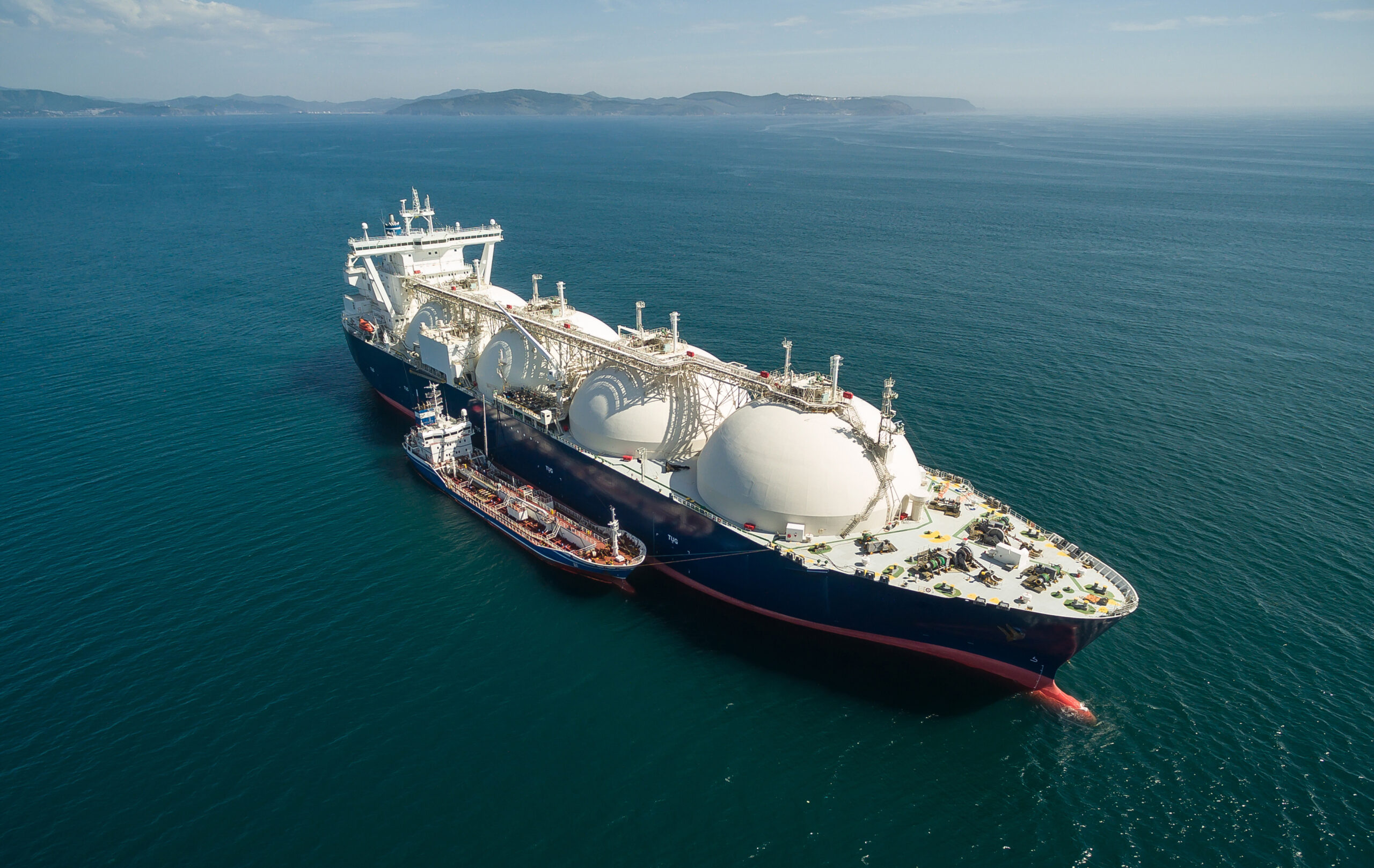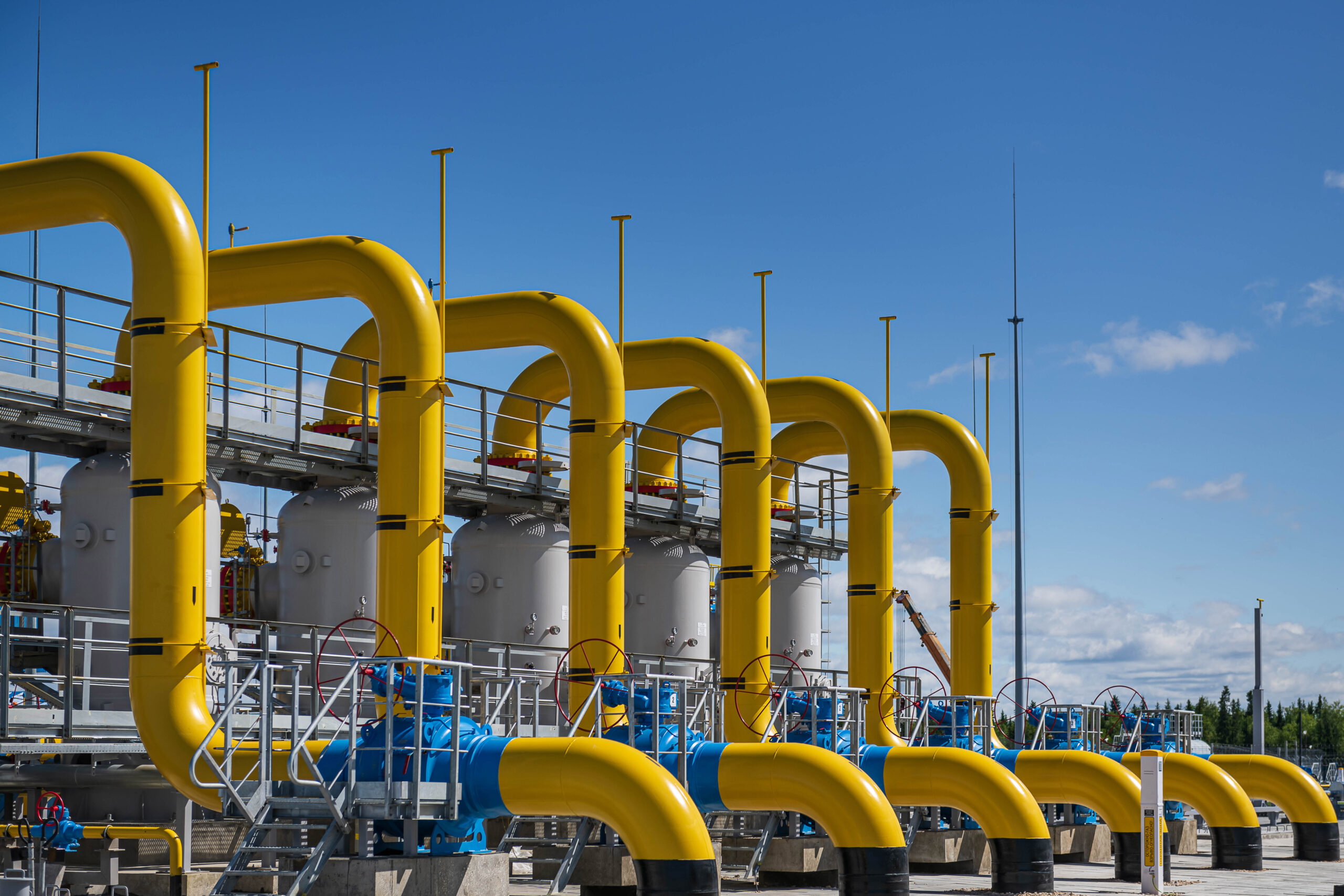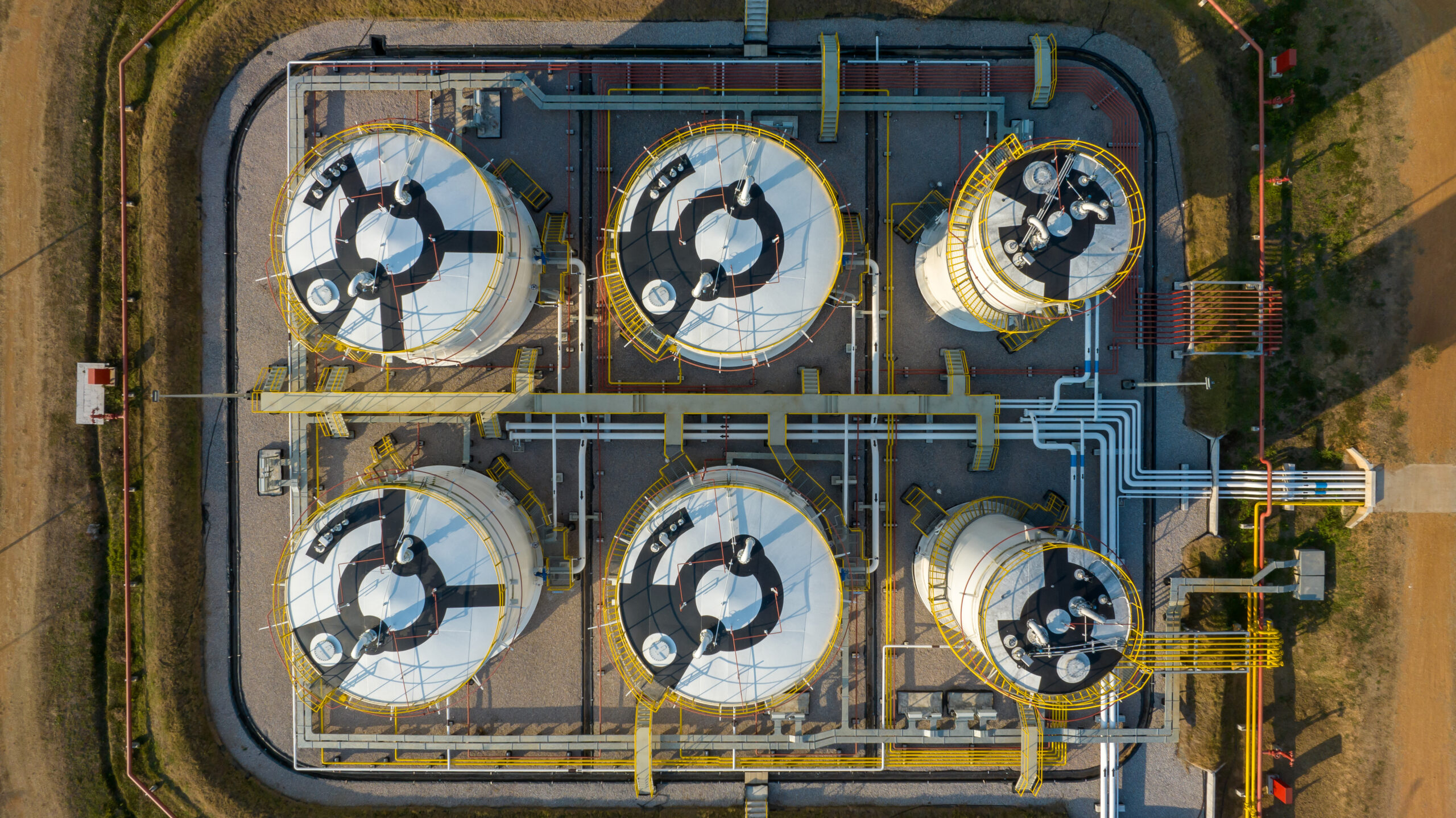“The rise of Asian demand flex underpins strong value creation opportunities”
Europe’s TTF hub is the key liquid benchmark for gas pricing in the Atlantic Basin. The Asian JKM hub plays a similar role in the Pacific Basin.
Atlantic & Pacific Basin gas prices are in a state of structural convergence, driven by LNG arbitrage (crisis conditions aside).
Historically the European gas market has played a key role driving pricing dynamics across both the Atlantic & Pacific Basins, supported by significant volumes of flexible switching demand in the power sector. However Asian demand flexibility is rapidly emerging as a new force driving global marginal price setting.
Take two recent practical examples:
- In the peak of the energy crisis in 2022, European gas prices surged to around 100 $/mmbtu, while demand response in Asia saw the JKM price rise limited to around 70 $/mmbtu
- More recently across last winter, weak demand saw the European gas market oversupplied, with Asian demand responding to absorb surplus LNG at lower prices.
The importance of Asian demand flex in setting prices is set to increase substantially across the next few years. In today’s article we focus on the price setting role of Asian flex, define 5 key sources of Asian flex & set out commercial implications.
3 key sources of flex dominate global price setting
There are 3 key sources of marginal flexibility that act to clear the global gas market and drive pricing dynamics. We summarise these in Table 1.
Table 1: 3 key sources of marginal flexibility
Chart 1 illustrates the ranges across which these 3 drivers act to influence marginal price setting.
Chart 1: Price range influence of 3 drivers

Source: Timera global gas model - prices in real 2024 $
European power switching is important across a 10-15 $/mmbtu gas price range (given current forward coal & carbon prices). This is why TTF & JKM forward prices are currently highly correlated with coal & carbon prices.
US export flexibility is more important in an oversupplied market, e.g. acting as price support in a 5-7 $/mmbtu range given current Henry Hub forward prices (and variable liquefaction & shipping costs).
Asian demand flexibility is increasingly important as a marginal driver across all price ranges. Let’s dig into what the sources of Asian demand flex are and how they influence marginal pricing.
5 key sources of Asian flex response
The flexibility of Asian LNG demand to respond to price signals is determined by a broad range of sources across different countries. These flex sources operate at different price levels & over different response horizons. But like any complex problem the sources of flex that drive marginal pricing can be broken down into some key categories which we show in Table 2.
Table 2: 5 key categories of Asian flex response
There is a structural growth trend in the influence of Asian demand flex. We illustrate this across the next few years using analysis from our global gas model in Chart 1. The blue line shows expected Asian demand volumes (given our JKM price projection) with the grey shaded range showing substantial volumes of price induced demand response if JKM prices outturn higher or lower.
Chart 2: Total Asian demand growth & flex response volume range

Source: Timera, LNG unlimited
Structural growth in Asian demand response is underpinned by factors such as Asian economic growth, declining domestic gas reserves and a transition to gas to address pollution issues. The steady decline in European gas market switching flex as the coal fleet closes is also boosting the importance of Asian flex.
How do these flex sources drive marginal pricing?
Liberalised & liquid markets mean that European power switching is a highly price responsive source of flexibility. Asian demand response is typically more opaque, ‘stickier’ & less efficient, although it is set to gradually improve over time due to downstream market liberalisation & increasing hub based portfolio management.
What helps in Asia is a lot of LNG demand (particularly in more sensitive developing economies) is purchased on a spot market basis (vs via long term contracts). This helps enhance demand responsiveness to price.
However Asia has very limited underground gas storage which means a lot of demand response is managed ‘on the water’ via the LNG supply chain. As a result there are inherent time lags in supply response, as well as the lags we describe above on the demand side.
Commodity price linkages are also important drivers of Asian demand response at different price levels e.g. coal for gas switching in power sector & oil for gas switching in power & industrial sectors.
5 commercial implications of increasing influence of Asian demand flex?
Timera provides fundamental gas market analysis to a broad range of leading LNG & gas companies, utilities & banks. As a clear sign of the rising importance of Asian demand response, our client base have been pushing us for more detailed quantitative analysis of how Asian flex drives pricing dynamics.
We have invested a lot in developing a more dynamic price / volume representation of Asian demand flex tranches to better understand how gas pricing will evolve and what the commercial implications & portfolio impacts will be.
This is one of the focus areas of our latest Q2 Global Gas Report, datasheet & chartbook, part of our global gas subscription service (see below if you’re interested in a sample copy of the report & datasheet).
Let’s finish by drawing out 5 key takeaways on commercial & value impact to consider as the price setting influence of Asian flex increases:
- Regime shift – As the next wave of new supply ramps up from 2025, Asian demand response will play a key role in clearing the global market, absorbing supply & setting marginal prices & the level of US cargo cancellations (if any)
- Price volatility – time lags & stickiness in Asian response is set to structurally support global gas price volatility, increasing the importance of extrinsic (flex) value in contracts & portfolios
- Price correlation – shifting price correlations as Asian flex anchors (e.g. coal & oil prices) have a stronger influence on JKM, impacting LNG portfolio exposures & value
- Asian access – access to monetise LNG in Asia (e.g. via regas or physical sales contracts) is becoming much more important to manage portfolio exposures & create value
- Value optimisation – rich growth in Pacific Basin commercial & portfolio optimisation opportunities across different sources of Asian flex (e.g. SPAs vs sales contract flex vs shipping & regas logistics), supported by maturing market price discovery.
The rapid growth in influence of Asian demand flex underpins strong value creation opportunities. This is supporting investment to develop more commercially responsive Asia Pacific LNG business models. The ability to quantify the impact of Asian flex price / volume tranches on pricing dynamics & map this onto portfolio value shifts is a source of key competitive advantage.
Would you like more analysis?
We have just published our Q2 Global Gas Report, datasheet & chartbook. This forms part of our quarterly subscription service. Send us an email if you would like a free sample copy.
The report covers:
- Price recovery – dynamics driving gas price rise since Mar 2024 (e.g. Asian LNG demand rebound)
- Asian demand flex – increasingly important role of Asian flex in driving marginal prices
- Price evolution – our analysis of the evolution of JKM / TTF / HH price evolution to 2040 – inc. spreads, correlations, volatility dynamics
- Henry Hub – growing influence of US gas prices from 2026 (+ case study on impact of rising HH prices)
- Commercial impact – key takeaways on LNG & gas portfolio value impact.
Our analysis is rapidly gaining traction across LNG & gas companies, utilities & banks. As a result we are improving our efficiency in delivering the analysis behind the service. This is helping us reduce subscription cost. We currently have a discounted special offer on annual subscriptions until 31 Jul 2024.
For a free sample & more details feel free to contact David Duncan (LNG & Gas Director) david.duncan@timera-energy.com or Olly Spinks (Managing Director) olly.spinks@timera-energy.com.



